宝安国际机场T3航站楼,中国深圳
Shenzhen Bao'an International Airport Terminal 3, Shenzhen, China
项目客户 Client | 深圳机场(集团)有限公司
竞赛时间 Competition time | 2008
竞赛结果 Outcome | 第一名
面积 Area | 500,000 sqm
结构顾问 Engineering Consultants | Knippers Hdlbig Engineering, 北京市建筑设计研究院
灯光设计 Lighting | Speirs & Major Associates.
Scroll down to view English version


设计草图(上) Sketches (Top)
蝠鲼(下) Manta Ray (Bottom)
深圳宝安国际机场T3航站楼的设计理念会让人想起蝠鲼,一种海里的鱼,它一边呼吸一边改变自身形态,在一系列的变换动作后,像鸟一样跃出水面。再经过设计师的一系列的设计之后,巨大的蝠鲼型航站楼就像大鸟一样振翅欲飞。
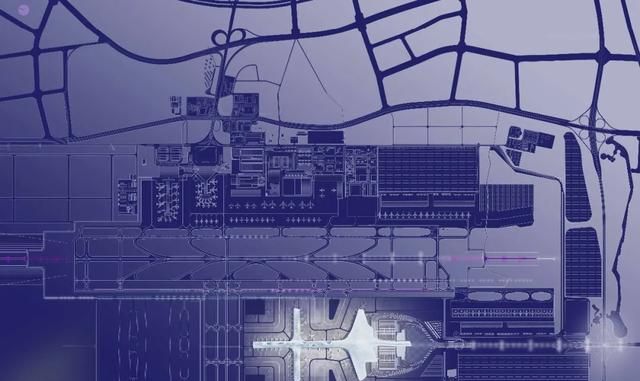

总平面图(上) Masterplan (Top)
鸟瞰图(下) Aerial View (Bottom)
T3航站楼的主体结构是一条约1.5千米长的隧道,它的形体如同经过了风的打磨,化身为一个有机形状的巨大雕塑。屋面轮廓的特点是其以不断改变的高度来与周围自然景观之间所做的一种呼应与结合。
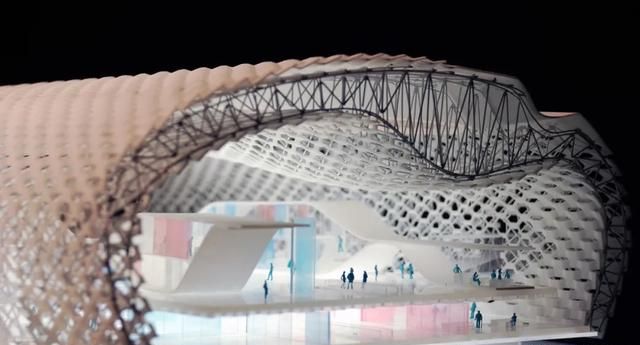
实体模型 Physical Model
航站楼的标志性设计元素是包裹着建筑的双层表皮上的蜂巢主题结构。这两层“表皮”可以让自然光照射进来,从而在室内空间中创造明亮的效果。建筑表皮由蜂窝形状的金属板以及大小不同并可部分开合的玻璃板组成。
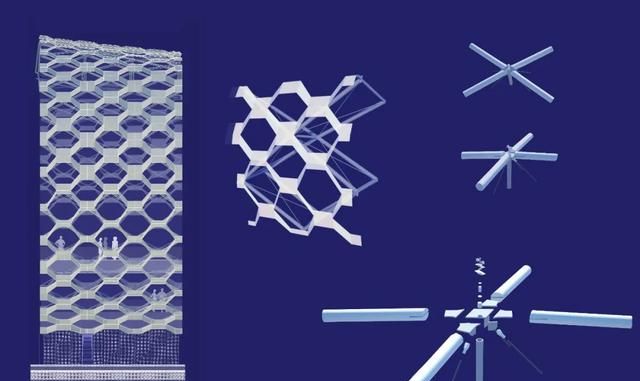

结构节点(上) Structural node (Top)
航站楼室内效果(下) Terminal Interior (Bottom)
其外形设计充分考虑了深圳市的亚热带地理及气候条件。建筑设计的主要宗旨不仅要在这样一个重要的公共建筑里给人们提供良好舒适的环境及开放明朗的空间,而同时更要充分利用自然光的照明,注重建筑自身能源的节约,创建生态节能的现代建筑体系。
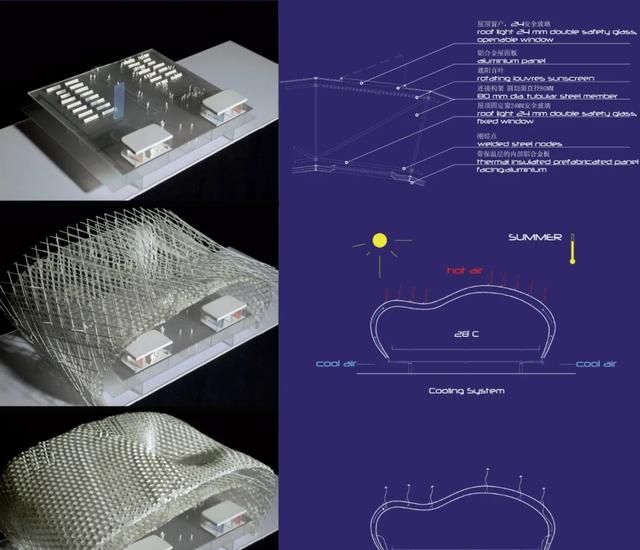

表皮结构分析(上) Analysis of Building skin and its structure (Top)
航站楼室内效果(下) Terminal Interior (Bottom)
双层表面之间由隔离层构成,其帮助避免了由于阳光直射引起的室内温度过高的问题,并可有效控制室内空调运转功率保持在最低值,从而达到节约能源的效果。外表面是由单层铝合金板及开窗构成,用以遮风避雨,内表面是带保温层的铝合金板及双层玻璃,其可以尽可能的减少外部热源进入到室内,同时也避免了由于室内内外温度的差异引起的内表面的起雾及凝结水滴。在外表面之下设有用以遮挡阳光的百叶窗,随着阳光角度的改变,百叶将自动调整方向。以避免阳光的直射。
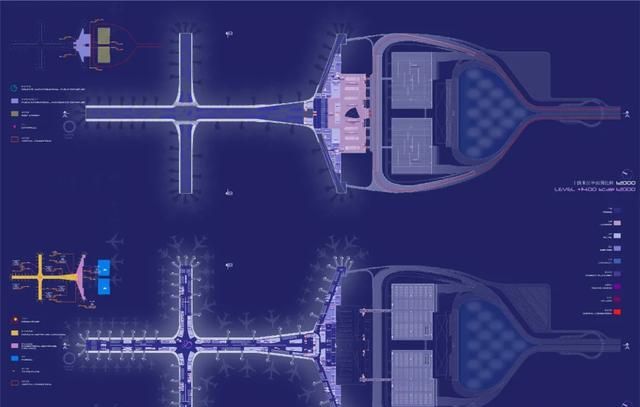
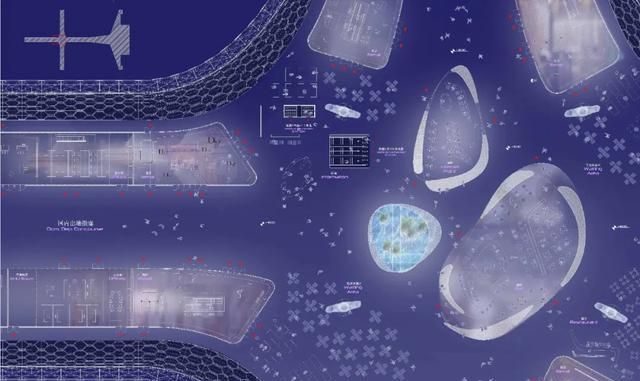
8米层及14米层平面图(上)
Level +8.00m and +14.00m Floor Plans (Top)
8米层平面图细节(下)
Detailed Floor Plan of Level +8.00m (Bottom)
乘客通过建筑巨大的“尾巴”下方的入口进入航站楼。宽敞的航站楼内最大的特点是采用了圆锥形的白色支撑柱,它们向上延伸,一直到达屋顶,就好像大教堂的内部结构。航站楼的一楼广场可通往行李托运处、出港区、进港区,以及咖啡馆、餐厅、办公楼和商务设施。出港厅设有办理登机手续的柜台、航空公司信息台和服务台。出港厅中两层与三层的室内通高空间为不同楼层之间建立起了一套视觉联系,为自然光创造了一条通道。办理登机手续后,搭乘国内及国际航班的乘客就可以在不同楼层之间穿行并寻找自己的登机口了。


剖透视展示(上) Sectional Isometric View (Top)
出发大厅(下) Departure Hall (Bottom)
大厅是机场的关键区域,共有三个楼层。每个楼层的功能都有所不同,分别为出港区、进港区和服务区。大厅的管形设计采用了运动的概念。“交叉点”是大厅三个楼层与通高空间垂直方向的连接处,通高的空间允许自然光从高处照射下来,经过过滤,进入一层的候机厅。
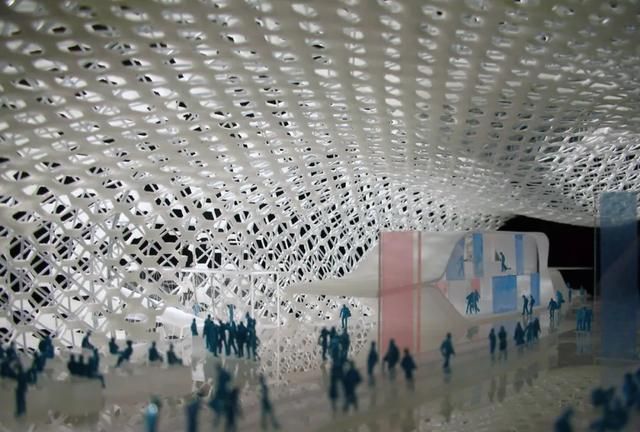

实体模型(上) Physical Model (Top)
商业区域设计(下) Commercial and Retails Design (Bottom)
蜂窝式的主题设计也被应用在了室内设计中。面对面排布的商业空间设计可理解为放大版的蜂窝,并以不同的形式出现在大厅中。
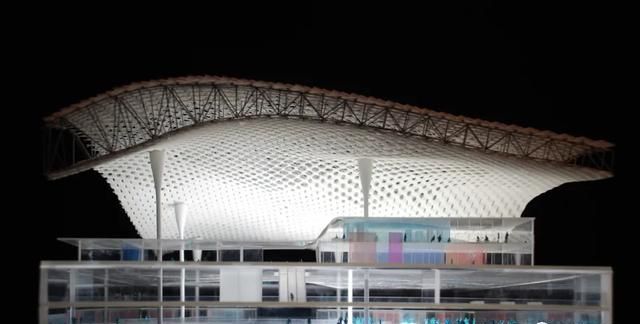
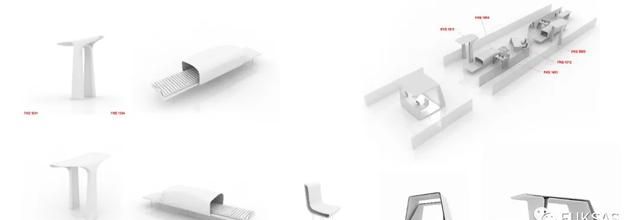
实体模型(上) Physical Model (Top)
航站楼家具设置(下) Terminal Furniture Design (Bottom)
室内设计由福克萨斯建筑事务所负责,包括上网区、登机手续办理区、安检口、登机口和护照检查区。航站楼的室内轮廓设计研究,以不锈钢饰面反射并强化了室内“表皮”的蜂窝主题结构。设计师并特别设计了独具特色的树形雕塑,用来容纳航站楼和大厅内的所有空调。这些雕塑复制了一种无定形的异形设计,灵感源自大自然。行李认领处和信息台也采用了相同的设计理念。

到达大厅 Arrival Hall

鸟瞰图 Aerial View
The concept of the plan for Terminal 3 of Shenzhen Bao’an International Airport evokes the image of a manta ray, a fish that breathes and changes its own shape, undergoes variations, turns into a bird to celebrate the emotion and fantasy of a flight.

功能分布 Programmes Arrangement
The structure of T3, an approximately 1.5-km-long tunnel, seems to be modelled by the wind and is reminiscent of the image of an organic-shaped sculpture. The profile of the roofing is characterised by variations in height alluding to the natural landscape.

出发大厅 Departure Hall
The symbolic element of the plan is the internal and external double “skin” honeycomb motif that wraps up the structure. Through its double-layering, the “skin” allows natural light to go in and thus, light effects are created within the internal spaces. The cladding is made of alveolus-shaped metal and glass panels of different size that can be partially opened.
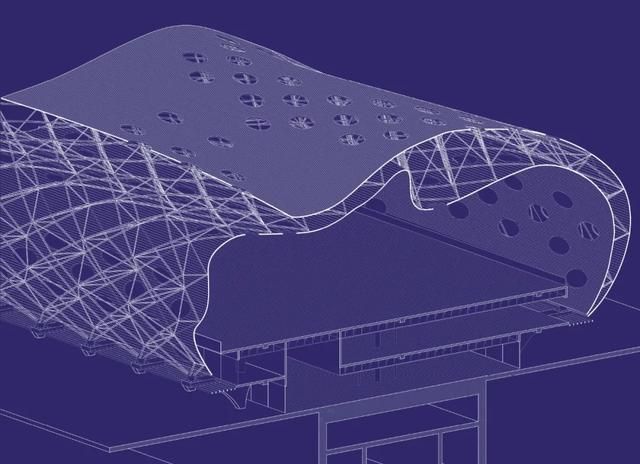
航站楼结构剖面 Terminal Structure Section
The building’s envelope has been designed to address the climate conditions of Shenzhen. It is the architects’ intention to propose an environment with light flooding into the open spaces, creating a welcoming atmosphere that is so important for a public building like this one. At the same time, a well naturally lit space constitutes substantial energy savings over the lifetime of the building and thus, ecological and monetary benefits will be well achieved.
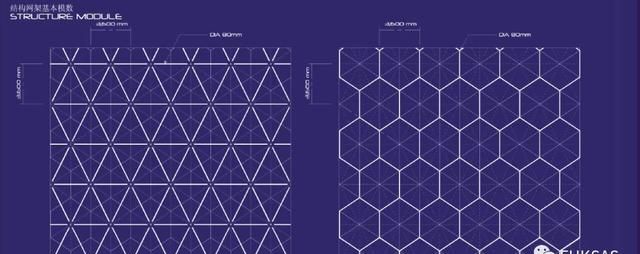
结构网架基本模数 Structural Module
A double-skin design has been applied to the façade with an insulation layer that is created in between them so as to prevent overheating of the building by sun radiation and to keep cooling energy at a minimum level.
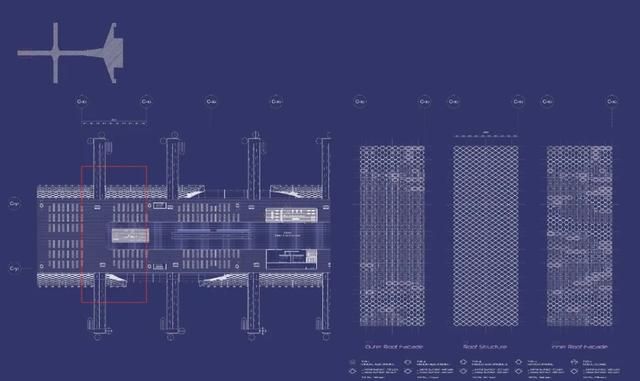
屋顶表皮细节 Roof Facade Detail
Single-layer aluminium panels and glassing panels are selected for the outer skin in terms of a weather protection consideration. The inner skin involves thermally insulated aluminium panels and double-layer glassing panels so as to achieve a reduction on heat transmission to the internal space of the building. It also prevents from condensation forming on the inner façade when the temperatures are different between inside and outside. Louvres are fitted in under the outer skin. When the sun position changes, they automatically adjust to protect from direct sun radiation.

8米层平面图细节 Detailed Floor Plan of Level +8.00m
The passengers accede to the terminal from the entrance situated under the large T3 “tail”. The wide terminal bay is characterised by white conical supporting columns rising up to touch the roof like the internal space of a cathedral. On the ground floor, the terminal square provides access to the check-in desks, departure and arrival areas as well as coffee houses and restaurants, offices and business facilities. The departure hall houses the check-in desks, airlines info. points and few help-desks. The double and triple height spaces of the hall establish a visual connection between the internal levels and create a passage for the natural light. After checking in, the domestic and international passenger circulation flows are spreading out vertically for departures.

剖面细节 Detailed Section Drawing
The concourse is the airport key-area and is made up of three levels. Each level is dedicated to three independent functions: departure, arrival and services. Its tubular shape is derived from the idea of motion. The “crossing” is the intersection point where the 3 levels of the concourse are vertically connected to. It creates full-height void space which allows natural light to filter from the highest level down to the waiting hall on the ground level.
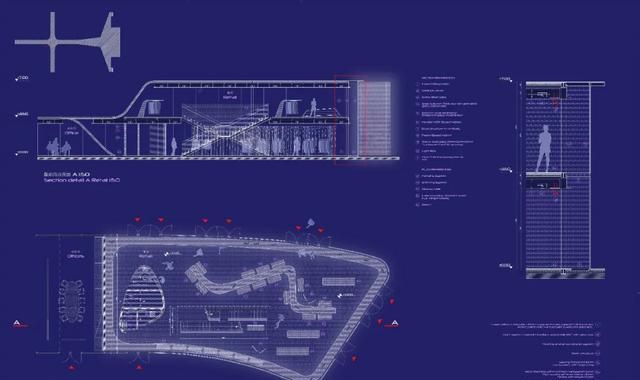
商业区域设计 Commercial and Retails Design
The honeycomb motif is also applied to interior design. Shop boxes, facing one another, reproduce the alveolus design on a larger scale that is replicated in different articulations along the concourse.
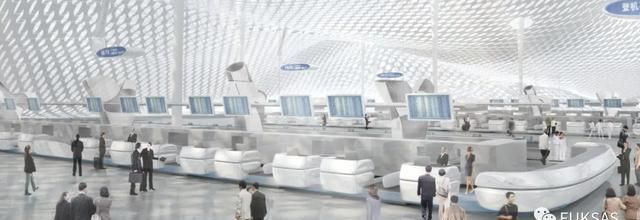
登机手续办理区域 Check-in Area
The interiors designed by Fuksas, including the internet points, check-in area, security check, gates and passport-check area. They have a sober profile and a stainless-steel finish that reflects and strengthens the honeycomb motif of the internal “skin”.
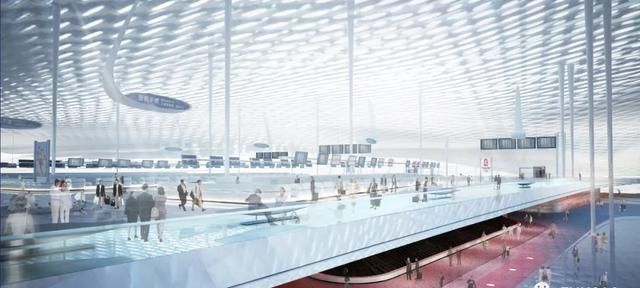
登机手续办理区域 Check-in Area
Sculpture-shaped objects - big stylised white trees, have been designed for air conditioning all along with the terminal and the concourse, replicating the use of amorphous forms inspired by nature. This is also the case for the baggage-claim and info. points.
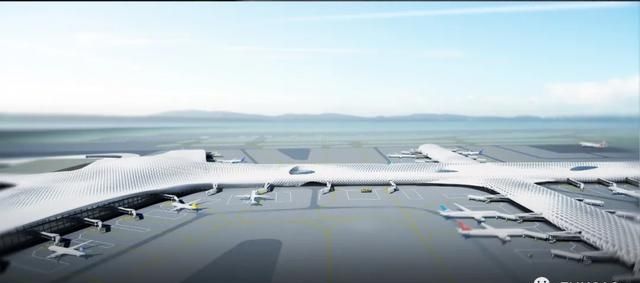
鸟瞰图 Aerial View
版权声明:本文来自用户投稿,不代表【闪电鸟】立场,本平台所发表的文章、图片属于原权利人所有,因客观原因,或会存在不当使用的情况,非恶意侵犯原权利人相关权益,敬请相关权利人谅解并与我们联系(邮箱:dandanxi6@qq.com)我们将及时处理,共同维护良好的网络创作环境。
